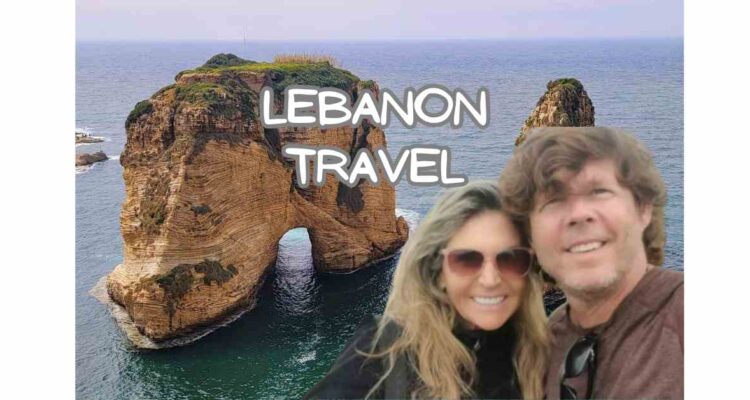This Lebanon Travel Guide 2024 provides two options for a 4 day itinerary in Lebanon.
Lebanon is a small yet incredibly diverse country, offering visitors a unique combination of historical, cultural, and natural experiences. Whether you’re exploring the busy capital of Beirut or marveling at ancient Roman ruins in Baalbek, Lebanon has something for everyone.
From the snow-capped mountains of the north to the sandy beaches of the south, Lebanon offers a wide range of experiences for travelers.
This 4 day itinerary in Lebanon will guide you through Beirut, Byblos, Harissa, Baalbek, and more, while also addressing safety concerns in 2024 and sharing all logistics including best hotels and restaurants in this Lebanon travel itinerary 2024.
Must-See Places in this 4 Day Itinerary in Lebanon
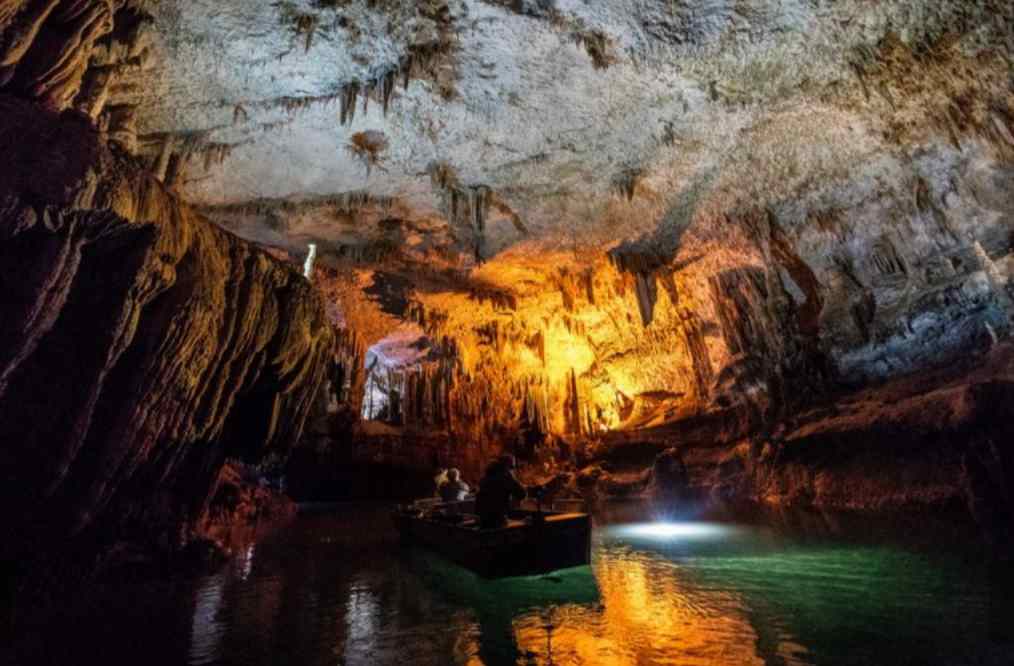
Here are some of the things that are must-see and do in Lebanon:
- Beirut: The capital of Lebanon, Beirut is an energetic city with a rich history and culture. This is a great place to call home in Lebanon to see most of the key sites.
- Byblos: A charming coastal town, Byblos is one of the oldest continuously inhabited cities in the world.
- Baalbek: Home to some of the best-preserved Roman ruins in the world, Baalbek is a UNESCO World Heritage Site.
- Jeita Grotto: A stunning cave system, Jeita Grotto is one of the most popular tourist attractions in Lebanon.
Our 2nd recommendation for a 4 day itinerary in Lebanon, has you continuing from Byblos to visit Qadisha Valley and Bcharre, then continuing to Baalbek and concluding in Beirut:

- Qadisha Valley: A UNESCO world heritage site, is set in a beautiful valley in the north of Lebanon. Qadisha Valley is home to several ancient monasteries and churches.
- Bcharré: The birthplace of renowned American-Lebanese poet Khalil Gibran, houses a museum dedicated to his life and works. Bcharre is also the gateway to the majestic Cedars of God, ancient trees which are symbols of Lebanon. Bcharre is also home to Lebanon’s oldest skiing area, the Cedars Ski Resort.
Safety in Lebanon (2024)
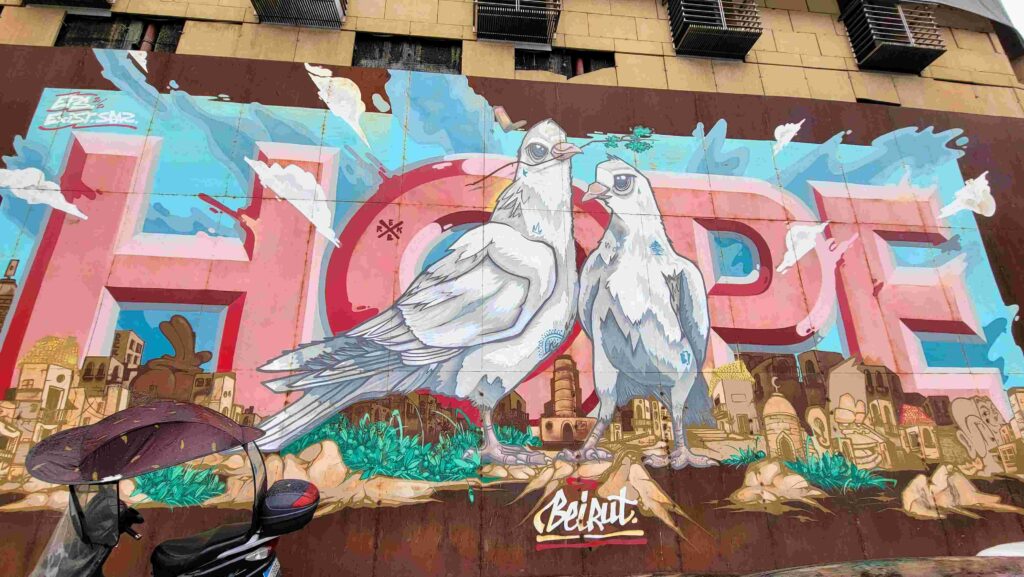
Lebanon’s political and security situation is volatile, particularly in the south. Beirut, Byblos, Jeita Grotto, Harissa, Qadisha Valley and Baalbek are generally considered safe for tourists, but it’s always important to stay informed. Avoid traveling near the southern border with Israel, as this area is currently unstable. Stick to well-known tourist destinations and consult with locals or your hotel about any safety concerns.
For us, we felt very safe in Beirut and all the towns and cities north of it. Our goal was to also travel to Sidon and Tyre. However, all of our guides and the hotel discouraged us from doing so. Therefore we did not go south of Beirut on this trip.
Practical Information – Lebanon Travel Itinerary

- Getting There: Beirut Rafic Hariri International Airport is the main airport in Lebanon. Make sure that you do not have any stamps from Israel when you come (although Israel has stopped stamping passports years ago).
- Visa Requirements: Most visitors receive a visa on arrival at no cost – this includes passport holders from the USA and Canada. Please note that Israeli citizens are not eligible to travel to Lebanon.
- Currency: The Lebanese pound is the official currency of Lebanon. The previous currency black market has been eliminated and at time of writing the exchange was 90 Lebanese pounds to 1 USD.
- Language: Arabic is the official language of Lebanon, but French and English are also widely spoken.
Additional Tips
- Best Time to Visit: The best time to visit Lebanon is in the spring or fall, when the weather is mild.
- What to Pack: Pack comfortable modest clothes, sunscreen, and a hat.
- Electricity: The electrical outlets in Lebanon are the same as in Europe.
- Tipping: Tipping is customary in Lebanon.
Best Guide/Driver for your 4 day Lebanon Itinerary

One of our favorite guides in the world is in Lebanon! His name is Ahmad Almasry and he can be reached on What’s App: +961 78 870 129 Our tour with Ahmad was epic and we cannot recommend him enough!
History and Culture
Lebanon’s history dates back thousands of years with the earliest evidence of human civilization in Lebanon dating back to over 5,000 BC. The country has been home to numerous civilizations, including the Phoenicians, Greeks, Romans, and Ottomans. This rich history has left behind a treasure trove of archaeological sites, including the ancient ruins of Baalbek, Byblos, and Tyre.
Lebanon is also a melting pot of cultures, with a diverse population of Muslims, Christians, and Druze. This diversity is reflected in the country’s cuisine, music, and art.
Day 1: Beirut Travel Guide
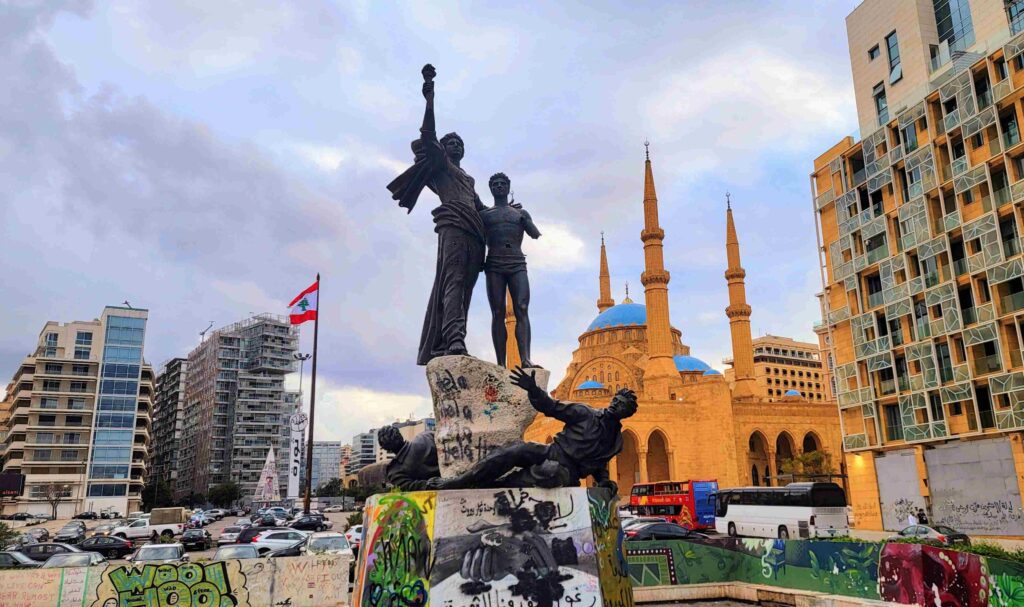
Your journey starts in Beirut, a city that effortlessly combines modernity with history. Despite its struggles, Beirut remains a cultural and social hub of Lebanon, known for its nightlife, historical landmarks, and diverse food scene. Here is our Beirut travel guide to show you how to spend your first day here:
Top Sights in Beirut
- National Museum of Beirut: Start your exploration with the National Museum, a treasure trove of artifacts dating back to the Phoenician era. This museum offers a comprehensive look at Lebanon’s ancient history and is a must-visit for history buffs.
- Raouché (Pigeon Rocks): This natural wonder is a pair of massive limestone formations located along the coast. It’s a perfect spot for a photo op, especially around sunset.
- Downtown Beirut: Take a stroll through the rebuilt downtown area, where modern skyscrapers stand next to historical churches and mosques. Visit the Mohammad Al-Amin Mosque and St. George Maronite Cathedral, which are symbols of the city’s diverse religious landscape.
- Beirut Corniche: Make sure to walk along the Beirut seaside promenade. It is lined with palm trees and has views of the Mediterranean and the summits of Mount Lebanon to the east. Locals picnic on the water and bathe in the sea, so it is also great for people watching.
Where to Stay in Beirut
Whether you’re traveling on a budget or seeking luxury, Beirut has a range of accommodations to suit every traveler:
- Luxury: InterContinental Phoenicia Beirut is a luxury hotel which overlooks the harbor. Located just a 6-minute walk from shops and eateries along the Mediterranean Sea, and 10 km from Beirut-Rafic Hariri International Airport. At $225 USD per night, freebies include a breakfast buffet and an airport shuttle.
- Luxury: Four Seasons Hotel Beirut is an excellent choice for those seeking a luxurious stay. Located near the waterfront, this hotel offers stunning views of the Mediterranean Sea, world-class service, and top-notch amenities. This hotel is currently going through renovations and will reopen in the near future – so stay tuned for their reopening time and rates.
- Mid-Range: The Smallville Hotel is set in a ultra-modern building, this hip hotel is a 3-minute walk from the National Museum of Beirut, and 3 km from shopping and dining on the fashionable Rue Gouraud.
- Budget: Hamra Urban Gardens is a good budget option located in the heart of the Hamra district. It’s perfect for travelers looking for modern accommodation without breaking the bank. Prices start at $42 USD per night, but breakfast is an extra charge.
Where to Eat in Beirut

Lebanese cuisine is famous worldwide, and Beirut is home to some of the best restaurants. Whether you’re craving shawarma, falafel, or fine dining, you’ll find something to suit your palate:
- Best Shawarma: Joseph Shawarma in Sin el Fil is considered one of the best shawarma spots in the city. Another is Basterma Mano. For meat eaters it is recommended to try both the chicken and beef shawarma, as they are considered to be equally delicious.
- Best Falafel: Falafel Sahyoun in Hamra is a local institution. Their falafel sandwiches are crispy, flavorful, and perfect for a quick bite.
- Top Restaurants:
- Em Sherif: A fine-dining experience with a rich variety of Lebanese dishes served in a traditional setting.
- Baron: A trendy spot in Mar Mikhael offering a fusion of Mediterranean and Middle Eastern flavors.
- Mayrig: Specializing in Armenian-Lebanese cuisine, Mayrig is a great place to experience a unique culinary blend.
- T-Marbouta: A casual restaurant tucked in a courtyard off of Hamra has great Lebanese food set in a nice garden.
- Luna’s Kitchen Beirut: A casual restaurant on the groundt floor of a hotel with indoor and outdoor garden seating. All food served is vegan and delicious.
Nightlife in Beirut
Beirut’s nightlife is legendary, offering everything from cozy pubs to upscale cocktail bars:
- SPINE Beirut: A rooftop bar offering food and drinks in a high energy atmosphere. Age limit is 24 and up.
- Central Station: Known for its creative cocktails, this bar is a favorite among locals and tourists alike.
- Ferdinand: A casual bar in Hamra with a laid-back atmosphere, perfect for enjoying a drink with friends.
- Iris Rooftop: For a more glamorous night out, head to Iris, a rooftop bar with views of the city and the Mediterranean.
Day 2: Byblos, Jeita Grotto and Harissa
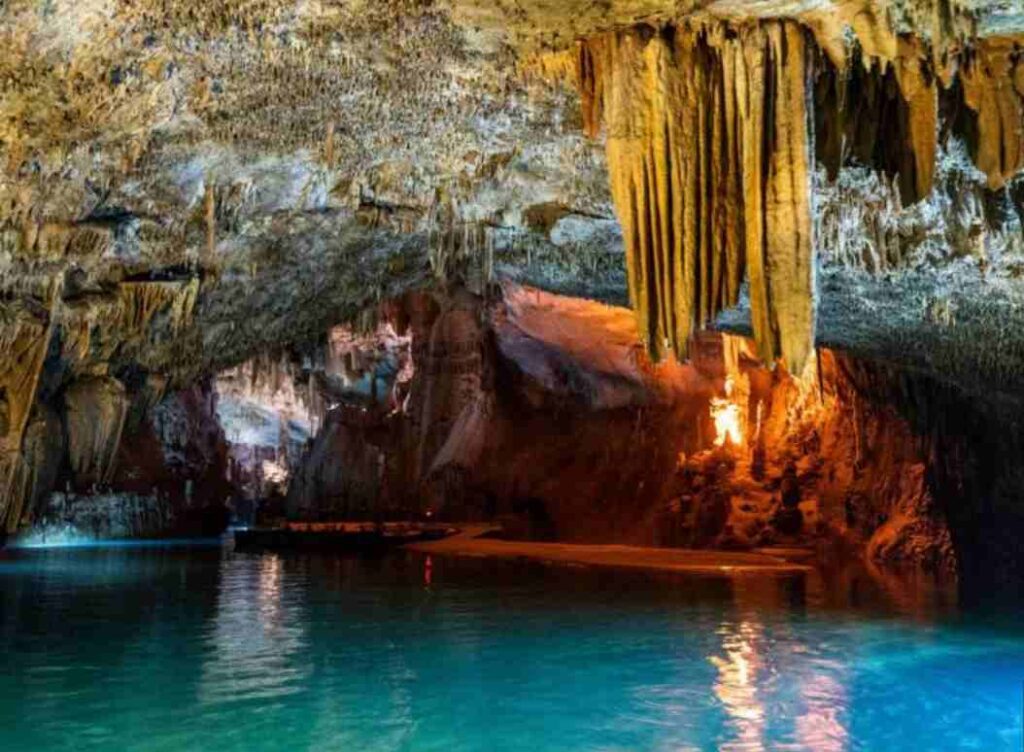
On the second day, venture north to the stunning Jeita Grotto, which is the number one thing that you must see and do in Lebanon. Then drive north to the ancient city of Byblos. Byblos is one of the oldest continuously inhabited cities in the world, with deep history, culture and charming cobblestone streets.
On the way back, take the cable car to visit the sacred site of Harissa and watch the sunset over Lebanon and the Mediterranean Sea.
Jeita Grotto
The Jeita Grotto is a must visit on any Lebanon travel itinerary and for good reason. For Rob and I it was the most memorable place to visit in the country. The Jeita Grotto complex has two interconnected limestone caves with formations of stalactites and stalagmites.
The upper cave, accessible by foot, features a series of chambers with intricate natural sculptures. The lower cave, navigable only by boat, reveals an underground river flowing through a mesmerizing subterranean world.
During our boat ride in the lower cave, there were no other tourists around and our boat quietly glided through the water of the deepest cave in the world. All we could hear were the droplets landing into the still cave water. It truly took our breath away.
Please note that no photography is allowed in either cave. You will be asked to place your phone and camera in a lockbox. However, we were later told that a $5 USD tip to the guards allows one to bring the phone inside.
Byblos
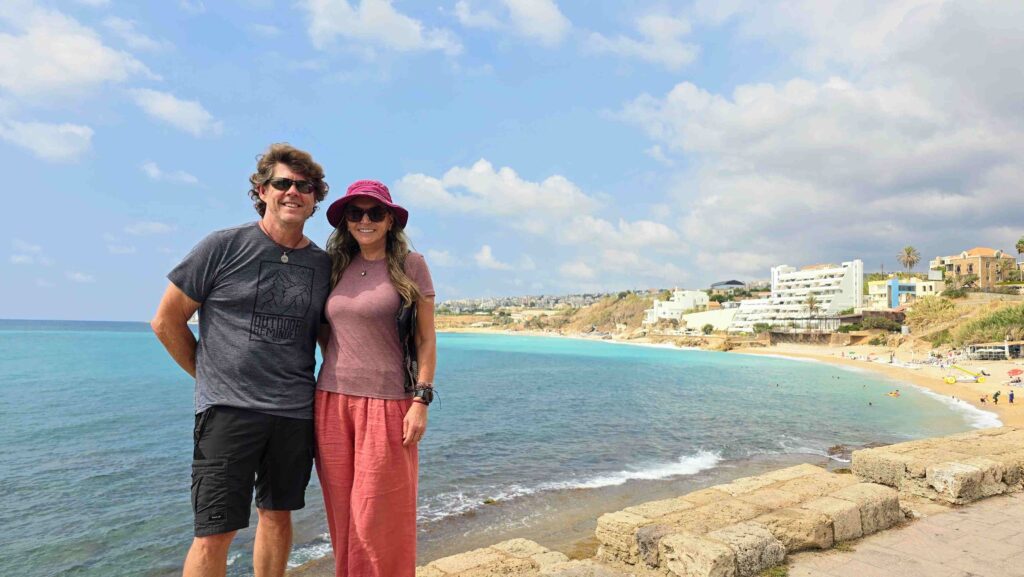
Byblos, also called Jbeil, is a fascinating coastal town. People have been living there continuously since around 5000 BC, making it one of the oldest cities in the world. It was a major center for the Phoenicians, an ancient group who even created the first alphabet there!
Today, you can still see ruins from different times throughout its history. There are old temples, a castle from the Crusades, and a charming old town area with narrow streets. Byblos also has a lively harbor where you can find great seafood restaurants.
Visiting Byblos is like stepping back in time, with its incredible history and mix of cultures. The beautiful coastal setting and lively atmosphere make it a great place to explore and enjoy the Lebanese spirit.
Top Sights in Byblos
- Byblos Castle: Built by the Crusaders in the 12th century, this castle offers stunning views of the Mediterranean and the surrounding city. It’s a great place to learn about Lebanon’s medieval history.
- Old Souks: The old marketplace of Byblos is set on thin winding cobblestone streets dotted with cafes and shops. It’s a perfect place just to roam around. You’ll find everything from handmade jewelry to traditional Lebanese crafts.
- Byblos Port: A picturesque harbor that has been in use since 3000 BC. It’s a great place for a scenic walk or to enjoy a meal by the water.
Where to Stay in Byblos
- Luxury: Byblos Sur Mer – Hotel – This 5 star hotel overlooks Bahsa Beach on the Mediterranean Sea and is a 7-minute walk from Byblos Castle and a 10-minute walk from the Old Souk. Prices start at $135 USD per night.
- Mid-Range: BURJ on Bay – This upscale hotel on a hilltop overlooking the Mediterranean Sea is 3 km from the Casino du Liban and 2 km from Donna Maria Beach. Price starts at $100 USD per night.
- Budget: Byblos Guest House – A friendly guest house located 2.3 km from Byblos Castle. Prices are $50 USD for a private room with a bathroom.
Where to Eat in Byblos
- Babel: An upscale restaurant offering fresh seafood with a Lebanese twist. It’s located near the port, providing diners with beautiful views as they enjoy their meal.
- Feniqia: A more casual option with a cozy atmosphere, serving traditional Lebanese food. Their mezze platters are highly recommended.
- Sapori E Vini: An Italian restaurant serving great ingredients and good wine options. Try the risotto in their smoke free restaurant (rare in Lebanon).
Harissa
On your way back to Beirut, stop at Harissa, a hilltop village that’s home to the Our Lady of Lebanon statue. The statue is a pilgrimage site and offers panoramic views of Jounieh Bay. You can take the cable car (Teleférique) from the city of Jounieh up to Harissa, making it an unforgettable way to end your day.
Day 3: Exploring Baalbek
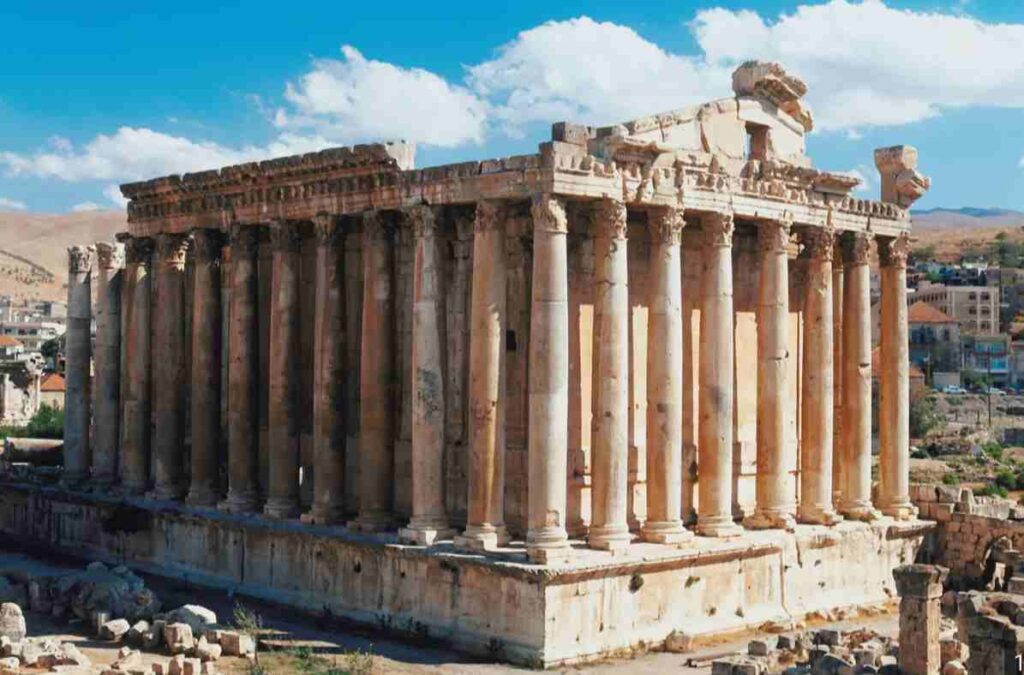
Baalbek, located in the Beqaa Valley, is home to some of the most impressive Roman ruins in the world. This UNESCO World Heritage site is a must see and do in Lebanon for history enthusiasts.
Baalbek is like an open-air museum of ancient Roman grandeur. It’s most famous for its massive temple ruins, especially the Temple of Bacchus and the Temple of Jupiter. These temples are some of the biggest and best-preserved Roman structures anywhere, with towering columns and detailed carvings that are mind-blowing even today.
The whole place was once a major religious center, dedicated to gods like Jupiter, Venus, and Bacchus. People would travel from far and wide to worship there. Later on, it became a fortress and a city, so you’ll also see traces of other historical periods mixed in with the Roman stuff.
Today, Baalbek is a UNESCO World Heritage Site and a must see and do in Lebanon. It’s a truly impressive place that gives you a sense of just how powerful the Roman Empire once was.
How to Get to Baalbek
Baalbek is about a two-hour drive from Beirut. The most convenient way to visit is by asking Ahmed to drive you (What’s App:+961 78 870 129) or renting a car or perhaps joining a guided tour. If you prefer public transportation, you can take a bus from Beirut to Baalbek, though it may be slower and less convenient.
Top Sights in Baalbek
- Temple of Bacchus: This is one of the best-preserved Roman temples in the world. Its massive columns and intricate carvings are awe-inspiring.
- Temple of Jupiter: The largest Roman temple ever built, this massive structure is a testament to the grandeur of the Roman Empire.
Where to Eat in Baalbek
- Sol Bistro: Located in front of the ruins has outdoor and indoor seating with the library being smoke free. Bold combinations of flavors make this a real favorite for foodies and coffee lovers alike.
- Lakkis Farm – Baalbeck: This restaurant has indoor and outdoor seating. Most come for the Baalbek dish called Sfiha which is minced meat wrapped in pizza dough and baked in small pieces. You can eat it with a lemon and a salted yogurt drink called Ayran.
Day 4: Sidon and Tyre (Optional)
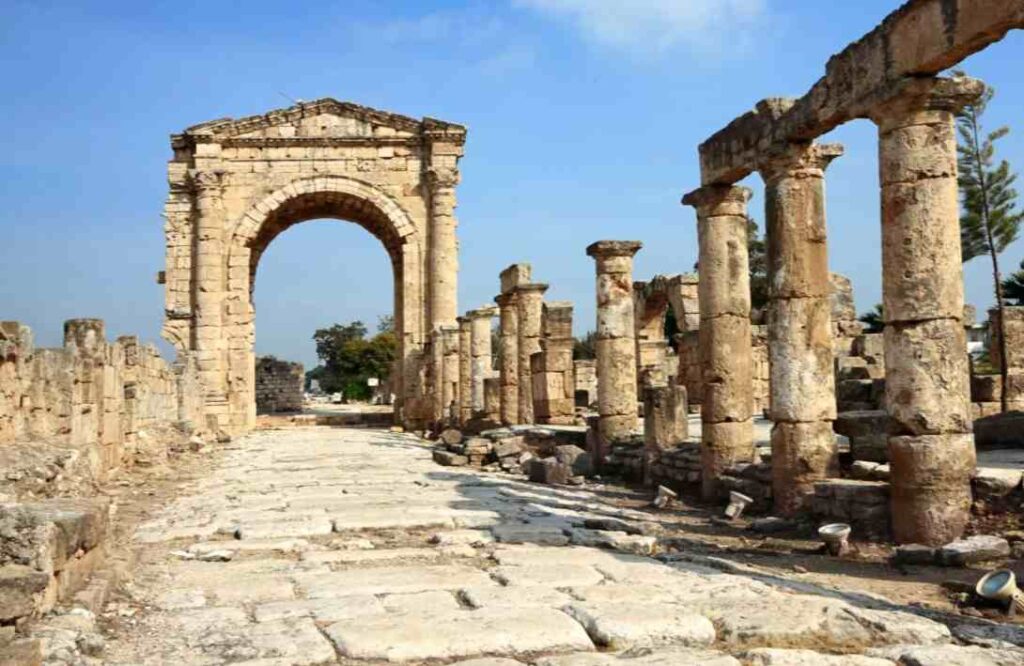
On the fourth day, you can head south to the coastal cities of Sidon and Tyre. However, it’s important to note that due to the ongoing conflict in Gaza and increased tensions in the region, travel to southern Lebanon may not be advisable in 2024. Always check the latest travel advisories before heading south of Beirut.
If travel to the south is not advised at the time of your visit, then we recommend spending your last day in Lebanon exploring more of Beirut.
Sidon
Sidon, also called Saida, is an ancient city on the Lebanese coast just 44 km south of Beirut. It’s roots stretch back over 6,000 years! During that time, Sidon was a powerful city for the Phoenicians, a group of skilled sailors and traders who dominated the Mediterranean Sea.
Today, Sidon is a mix of old and new, with impressive historical ruins, a lively old town, and a beautiful walkway along the sea. You can check out a huge castle built during the Crusades, explore the maze-like streets of the old markets, and even learn how they used to make soap at the Soap Museum. Sidon’s got a ton of history and a unique vibe that makes it a place that one must see and do in Lebanon.
Top Sights in Sidon
- Sea Castle: This big castle was built by the Crusaders, but there might have been even older structures underneath.
- Old City: Wander through the narrow streets, check out the old soap museum, and find hidden gems like the Khan al-Franj market.
Where to Eat in Sidon
- La Marsa Garden: This highly-rated restaurant has a beautiful seaside setting and a menu featuring Lebanese favorites and fresh seafood.
- Kahwet 60 (Saïda): Located on a rooftop overlooking the sea, this restaurant serves a varied menu throughout the day and is known for it’s desserts.
Tyre
Tyre is located on the coast of Lebanon just 38 km south of Sidon or 82 km from Beirut. This ancient city dates back to 2000 BC. Back in the day, it was a major powerhouse for the Phoenicians, those ancient seafaring folks. Tyre was so important that it even rivaled Rome for a bit!
Today, you can still see the remains of its glorious past. There’s a huge Roman hippodrome where they used to have chariot races, and the Al-Bass site with its Roman baths and streets. You can also see traces of the Crusaders and other civilizations that ruled Tyre over the centuries. It’s like a history book come to life.
Top Sights in Tyre
- Roman Hippodrome: This huge ancient stadium used to host chariot races and other events.
- Al-Bass Archaeological Site: Check out the ruins of Roman baths, streets, and a triumphal arch.
Where to Eat in Tyre
- Le Phenicien: This port side spot has views of the colorful boats and a menu of Lebanese mezza and fresh seafood.
Option 2 – 4 day Itinerary in Lebanon

A second option for a 4 day Itinerary in Lebanon is the following:
Day 1: Beirut (with all the sites listed above)
Day 2: Travel to the Jeita Grotto, then Harissa by cable car from the coastal town of Jounieh, then to Byblos where you will stay overnight.
Day 3: From Byblos continue north east to the Qadisha Valley to visit the monasteries there and continue to Bcharre to visit the museum of American-Lebanese poet Khalil Gibran, and the Cedars of God – ancient trees which are symbols of Lebanon. Overnight in Bcharre.
Day 4: Head out early from Bcharre to Baalbek where you will spend the day visiting the ruins. Late return to Beirut.
Wrap Up – Lebanon Travel Itinerary 2024
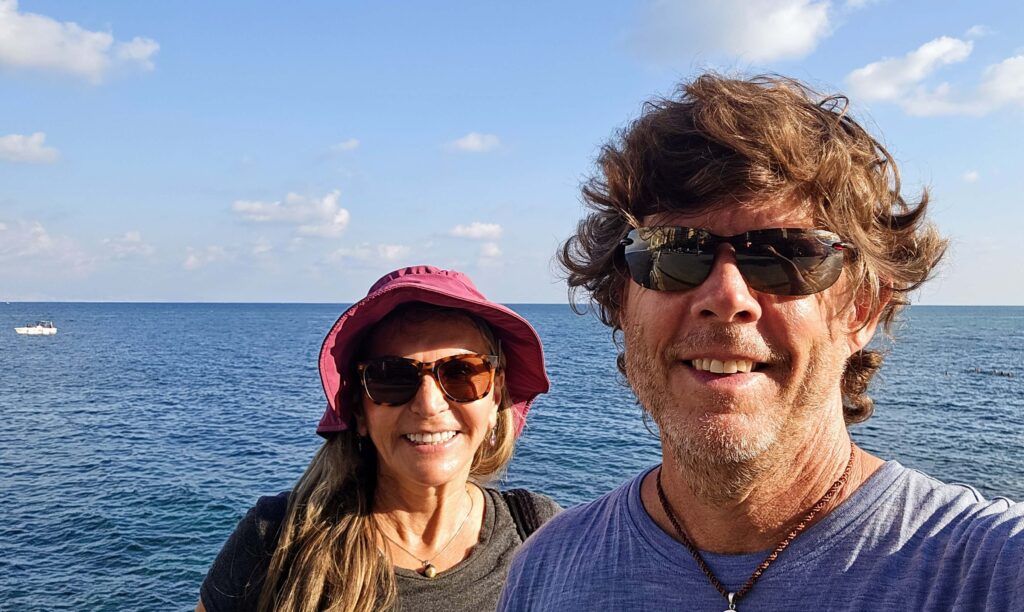
Lebanon is a beautiful and fascinating country with something to offer every traveler. Whether you are interested in history, culture, or nature, you are sure to find something to enjoy in our two options for a 4 day itinerary in Lebanon.
Have you been to Lebanon? We have been a number of times and with each visit discover something new here. In some ways Lebanon reminds us of Algeria and Libya– the incredibly friendly and hospitable people, the juicy pomegranates and the history! Although the smoking culture and littered nature in these parts makes it difficult at times.
Let us know if you have any questions about our 4 day itinerary in Lebanon in the comments. We would love to hear from you!

